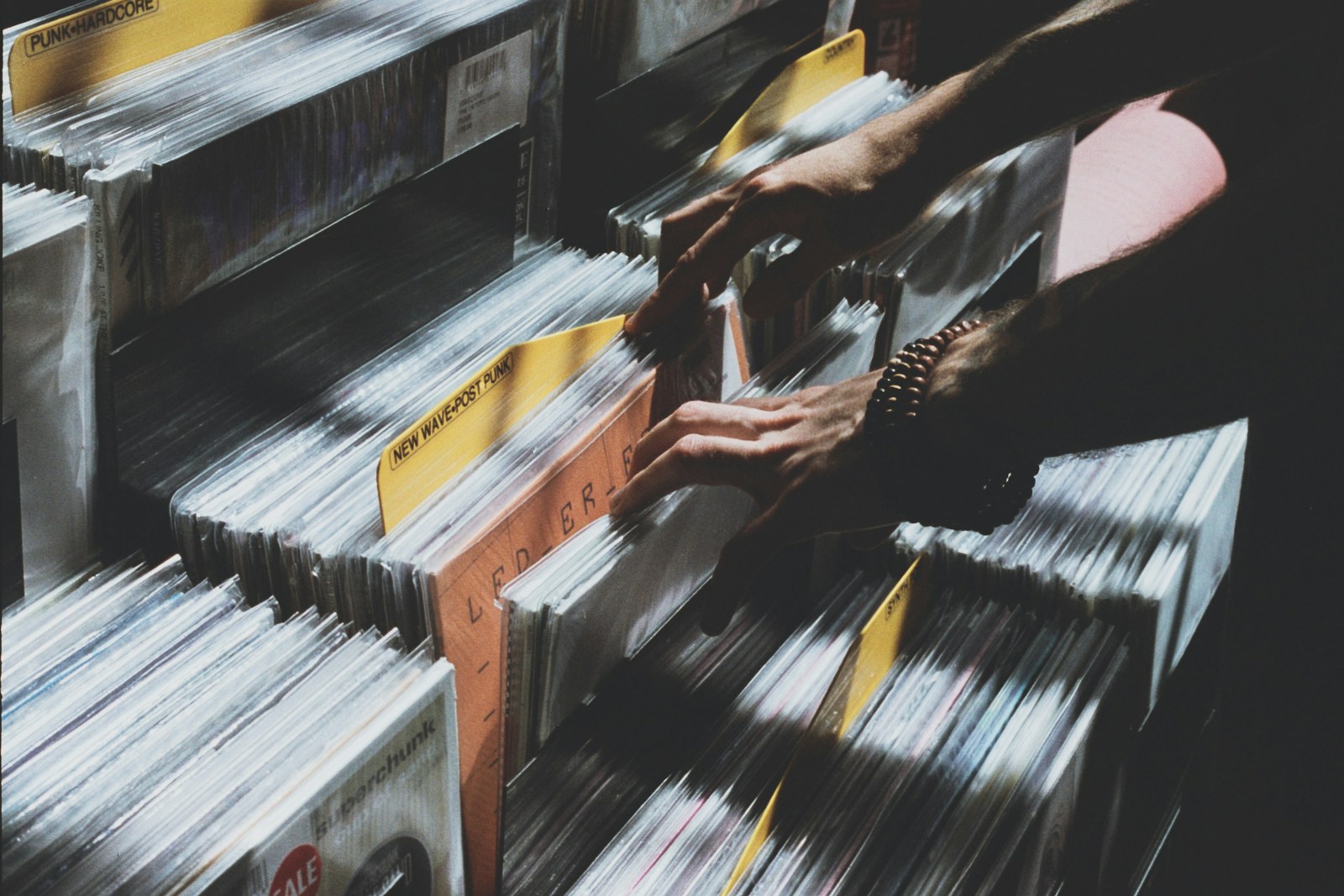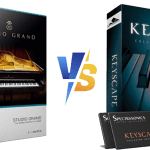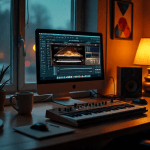This guide covers the best royalty-free music platforms like Epidemic Sound and Musicbed, plus free options. Learn how to choose the right tracks, understand licensing, and avoid copyright issues—whether you’re just starting out or creating professional content!
Understanding Royalty-Free Music
Contrary to what the name might suggest, “royalty-free” doesn’t always mean “free.” Instead, it refers to a specific licensing model where you pay once for a license and can then use the music without paying additional royalties for each use or view.
What Is Royalty-Free Music?
Royalty-free music is audio content that you can license for a one-time fee, allowing you to use it multiple times across various projects without paying ongoing royalties based on views, plays, or distribution. This differs from traditional music licensing, where fees typically scale with usage or audience size.
The key benefit is predictability: you know exactly what you’re paying upfront, with no surprise fees later if your content becomes successful. This makes budgeting significantly easier, especially for independent creators and small businesses.
Common Misconceptions
Let’s clear up some frequent misunderstandings:
- “Royalty-free” doesn’t mean “copyright-free”: The original composer or publisher still owns the copyright; you’re simply purchasing a license to use it under specific terms.
- It’s not always completely free: While some royalty-free music is available at no cost, most quality tracks require a one-time payment.
- Limitations still exist: Most licenses have restrictions on usage, such as prohibited uses in politically sensitive content, adult material, or reselling the music as part of a music service.

Types of Music Licenses
Understanding the different license types available will help you choose the right option for your specific needs.
Standard Royalty-Free Licenses
This is the most common license type offered by royalty-free music platforms. It typically allows you to use the music in various projects with some limitations on audience size or distribution channels.
Premium or Extended Licenses
For larger projects or commercial use, premium licenses offer additional rights, such as:
- Higher audience/view caps
- Broadcast rights for television or radio
- Extended distribution rights
- Use in products for resale
Subscription Models
Many platforms now offer subscription services that provide access to thousands of tracks for a monthly or annual fee. These are particularly cost-effective for creators who need music regularly.
Creative Commons Licenses
Creative Commons (CC) licenses allow creators to share their work under specific conditions:
| License Type | Attribution Required | Commercial Use | Modifications Allowed | Share Alike Requirement |
|---|---|---|---|---|
| CC0 | No | Yes | Yes | No |
| CC BY | Yes | Yes | Yes | No |
| CC BY-SA | Yes | Yes | Yes | Yes |
| CC BY-NC | Yes | No | Yes | No |
| CC BY-ND | Yes | Yes | No | No |
Understanding these distinctions is crucial—using a CC BY-NC track for commercial purposes, for example, would violate the license terms.

Top Royalty-Free Music Platforms in 2025
The landscape of royalty-free music has evolved significantly in recent years. Here are the leading platforms as of 2025:
Premium Libraries Comparison
| Platform | Monthly Cost | Library Size | Content ID Safe | Unique Features |
|---|---|---|---|---|
| Epidemic Sound | $15-$49 | 35,000+ tracks | Yes | Direct licensing, regular updates |
| Pond5 | $19-$49 | 1,000,000+ tracks | Yes | Pay-per-track option, massive library |
| Musicbed | $9.99-$89.99 | 20,000+ tracks | Yes | Cinema-quality, custom licensing |
| Soundstripe | $19-$39 | 10,000+ tracks | Yes | Includes stock video |
Premium Libraries
1. Epidemic Sound ($15-$49/month)
- Extensive library with regular updates
- Direct licensing from artists
- Covers all platforms including YouTube Content ID
- Simple licensing structure with clear terms
2. Pond5 ($19-$49/month, also pay-per-track options)
- Massive library with over 1 million tracks
- Both subscription and single-track purchase options
- Includes sound effects, stock footage, and images
- Music-forward search with detailed filtering options
3. Musicbed ($9.99-$89.99/month)
- Premium music from established and emerging artists
- Highly curated, cinema-quality selection
- Custom licensing for larger projects
- Excellent search filters
4. Soundstripe ($19-$39/month)
- Simple licensing model
- Unlimited downloads with subscription
- Includes sound effects and stock video
- Strong playlist curation
Budget-Friendly Options
1. Uppbeat (Free plan available, Premium $6.99/month)
- Free plan with limited downloads (requires attribution)
- Premium removes attribution requirement
- Regularly updated library
2. PremiumBeat (Single tracks $49-$199)
- One-time purchases rather than subscriptions
- High-quality, professionally produced tracks
- Straightforward licensing terms
3. AudioJungle ($1-$100+ per track)
- Enormous library with diverse options
- Pay-per-track model with various license tiers
- Community-driven with many independent composers
Free Resources
1. YouTube Audio Library
- Completely free for YouTube content
- No attribution required for most tracks
- Limited but growing selection
2. Free Music Archive
- Curated library of free, legal audio
- Various Creative Commons licenses
- Diverse genres and styles
3. ccMixter
- Community-driven remix platform
- Creative Commons licensed music
- Encourages collaboration and remixing
Free vs. Paid Options
When deciding between free and paid royalty-free music, consider these factors:
Advantages of Paid Services
- Quality and uniqueness: Paid libraries typically offer professionally produced tracks less likely to appear in multiple creators’ content
- Comprehensive licensing: Clear terms covering all potential uses without attribution requirements
- Regular updates: Fresh content added consistently
- Advanced search tools: Find the perfect track quickly with precise filtering
- Customer support: Help with licensing questions or technical issues
When Free Options Work Well
- Limited budget projects: Student films, personal content, non-profit work
- Content with minimal distribution: Small audience projects
- Background audio: When music isn’t a central element
- Testing and prototyping: Before committing to a paid service
Hidden Costs of “Free”
Some free music comes with strings attached:
- Attribution requirements that may be intrusive
- Limited licensing that may prohibit commercial use
- Risk of copyright claims if terms aren’t carefully followed
- Less unique tracks that appear in many creators’ content

How to Choose the Right Music for Your Project
Finding the perfect track involves more than just browsing libraries:
Define Your Project’s Needs
Before searching, consider:
- The emotional tone you want to convey
- Your target audience’s preferences
- The role music will play (background, featured element, etc.)
- Length requirements and edit points
- Brand consistency if applicable
Technical Considerations
- Track length: Will you need to loop or edit the music?
- Dynamics: Does the music have natural points for transitions?
- Mixing compatibility: Will the music compete with dialogue or narration?
- Genre consistency: Does it match your other content?
- Instrumental vs. vocals: Consider whether lyrics might distract from your message
Search Strategies
Most platforms offer advanced search filters. Take advantage of:
- Mood-based searching
- BPM (beats per minute) filtering for pacing
- Instrument-specific searches
- Duration filters
- “Similar to” features that find music matching a reference track
Testing Before Commitment
Before finalizing your selection:
- Test the music against your actual footage or content
- Listen across different devices (headphones, speakers, mobile)
- Get feedback from colleagues or your target audience
- Consider alternate options for flexibility
Legal Considerations and Best Practices
Navigating the legal aspects of music licensing requires attention to detail:
Reading the Fine Print
Always thoroughly review license terms for:
- Usage limitations (commercial vs. non-commercial)
- Platform restrictions (social media, broadcast, etc.)
- Territory limitations (geographic restrictions)
- Project type exclusions
- Duration of the license (perpetual vs. time-limited)
Documentation Best Practices
Protect yourself by maintaining:
- Copies of all license agreements
- Purchase receipts and subscription confirmations
- Records of where and when you use licensed music
- Attribution information where required
Common Legal Pitfalls
Avoid these frequent mistakes:
- Using music beyond the scope of its license
- Failing to renew subscriptions when still using the music
- Ignoring attribution requirements
- Assuming a YouTube Content ID claim is incorrect when you may be violating terms
- Transferring licenses between individuals or companies
Industry Trends in 2025
The royalty-free music landscape continues to evolve:
AI-Generated Music
Artificial intelligence is revolutionizing music creation, with platforms now offering:
- Customizable AI-composed tracks
- Style-transfer technology to match specific moods
- Dynamic music that adapts to video content
- Ethical considerations around musician compensation
Emerging Players: Platforms like SoundAI, Amper Music, and MusicLM are leading this space, offering various degrees of customization and licensing clarity.
However, these innovations come with significant ethical implications for composers and creators, including debates about algorithmic plagiarism, fair artist compensation, and the very definition of originality in music.
*For a deep dive into these challenges, read our analysis: AI-Generated Music Ethics: When Algorithms Become Composers
(How to use AI tools responsibly while protecting human creativity).”
Blockchain and Music Licensing
Blockchain technology is bringing transparency to music rights:
- Smart contracts automating licensing terms
- Decentralized rights management
- Direct artist compensation models
- Verifiable usage tracking
Implementation Example: Musicoin and Audius are pioneering blockchain-based music platforms that directly connect creators with users, providing transparent licensing and immediate compensation.
Integration with Editing Platforms
Seamless workflow integration is becoming standard:
- Direct access to music libraries within video editing software
- Intelligent music suggestion algorithms
- Automatic timing and beat-matching
- One-click licensing from the editing interface
Popular Integrations: Adobe Premiere Pro now offers direct integration with Epidemic Sound and Pond5, while Final Cut Pro has partnered with Musicbed for seamless workflow.
Hyper-Personalization
Music tailored specifically to content is trending:
- Custom variations of licensed tracks
- Stem-based editing for flexibility
- Music that responds to video elements

Enhancing Your Content with Royalty-Free Music
Finding the right music can transform your content from good to exceptional. Consider these implementation strategies:
Establishing Audio Branding
- Develop a consistent audio signature across your content
- Select tracks that reflect your brand personality
- Create recognition through musical consistency
- Consider custom adaptations of royalty-free tracks
Music for Different Content Types
Different projects require different musical approaches:
| Content Type | Recommended Music Style | Typical Duration | Key Considerations |
|---|---|---|---|
| Corporate Video | Professional, unobtrusive | 1-2 minutes | Clean edit points, minimal vocals |
| YouTube Vlogs | Upbeat, contemporary | Full duration | Engaging intro/outro sections |
| Podcast | Distinctive intro/outro | 10-30 seconds | Memorable, brand-appropriate |
| Social Media | High-energy, trending | 15-60 seconds | Loop-friendly, quick impact |
Global Licensing Considerations
Music licensing requirements can vary significantly across different regions and understanding these differences is vital for international content.
International Licensing Variations
- Collection societies: Different organizations (ASCAP/BMI in North America, GEMA/PRS in Europe) have varying requirements
- Usage rights: Fair use provisions are broader in the US than in many European countries
- Copyright duration: Typically life of author plus 70 years, but with regional variations
Geographic Restrictions
When distributing content globally:
- Verify your license specifically includes worldwide rights
- Check for territory exclusions in standard licenses
- Consider public performance rights if your content will be shown in physical venues
FAQs About Royalty-Free Music
Conclusion
The world of royalty-free music in 2025 offers unprecedented opportunities for content creators to enhance their projects with professional-quality audio while maintaining legal compliance and budget control. From emerging AI-generated compositions to established premium libraries like Epidemic Sound and Musicbed, the options have never been more diverse or accessible.
The key to success lies in understanding that “royalty-free” is about creative freedom and peace of mind, not just cost savings. Whether you’re using free resources or investing in premium libraries, the right music licensing strategy can elevate your content and protect your investment. Take the time to understand your licensing options, choose platforms that fit your needs, and always maintain proper documentation of your music usage.
Start exploring these platforms today, and discover how the right music can transform your creative projects from ordinary to extraordinary.








